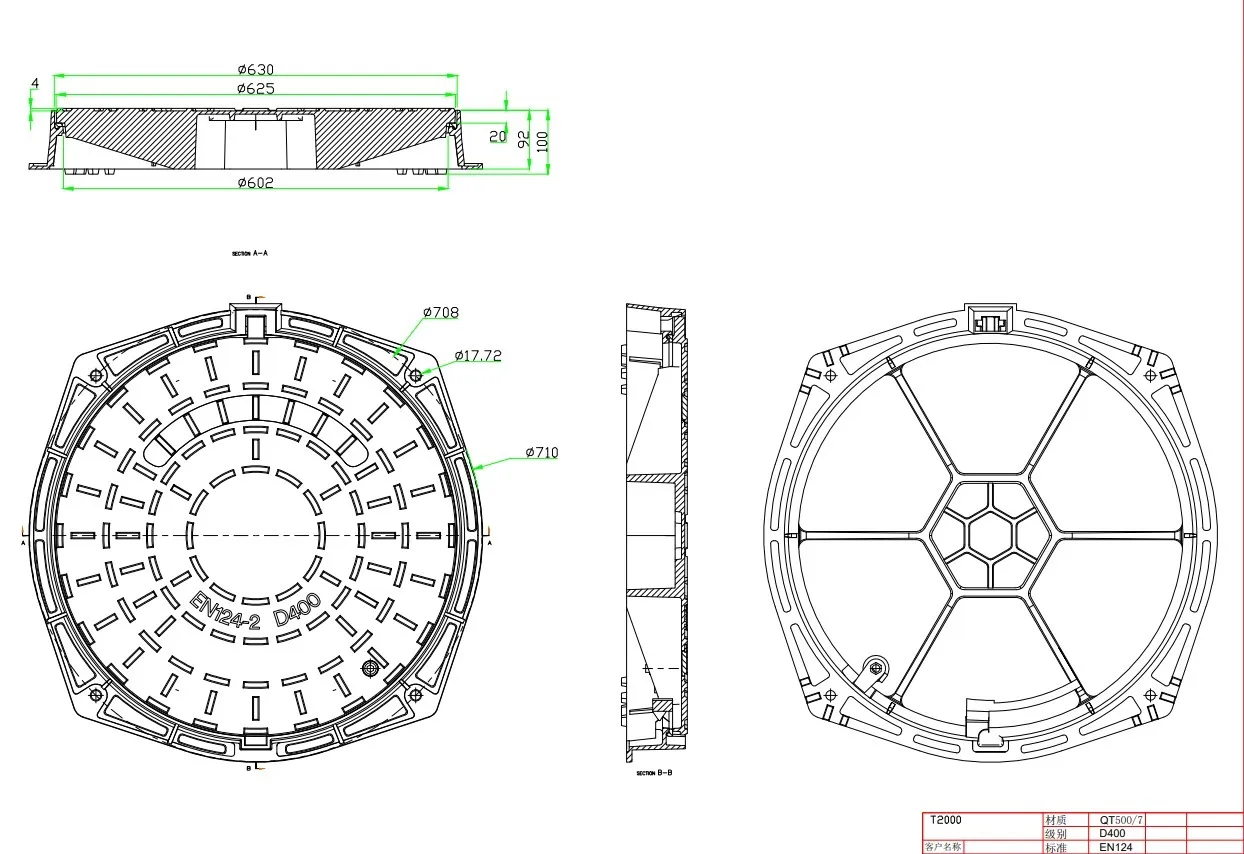combined butterfly check valve
Understanding the Combined Butterfly Check Valve A Key Component in Fluid Control Systems
In the world of fluid control systems, the efficiency and reliability of valves are paramount. One of the noteworthy innovations in this domain is the combined butterfly check valve. This device integrates the functionalities of a butterfly valve and a check valve, providing a solution that optimizes both flow control and prevention of backflow. In this article, we will explore the design, functionality, advantages, and applications of the combined butterfly check valve.
Design and Functionality
The combined butterfly check valve is engineered to serve dual purposes regulating flow and preventing backflow. The butterfly valve component consists of a circular disc mounted on a shaft that can pivot to open or close the flow path. This design allows for quick operation and minimal pressure loss, as the disc is positioned in the middle of the flow stream.
The check valve aspect of the combined unit allows fluid to flow in one direction while preventing reverse flow. This is crucial in systems where backflow can lead to contamination or damage. The check valve's mechanism typically utilizes a spring-loaded disc or a weighted flap that automatically returns to its sealed position when flow direction reverses.
Advantages of Combined Designs
1. Space and Cost Efficiency Combining two functionalities into one valve reduces the need for multiple separate components, saving space and lowering overall installation and maintenance costs.
2. Simplified Installation The integrated design allows for easier installation since there’s no need to align multiple valves. It streamlines the piping layout and simplifies engineering designs.
3. Reduced Flow Resistance The butterfly design ensures that the valve can open fully, minimizing resistance to flow and increasing overall system efficiency.
4. Enhanced Reliability Fewer components mean lower chances of failure. The combined valve reduces potential leak points and enhances the overall reliability of the fluid control system.
combined butterfly check valve

Applications
The combined butterfly check valve is prevalent across numerous industries due to its versatility and efficiency. Here are some of its key applications
- Water Treatment Plants In the treatment of wastewater and potable water, these valves help control flow and prevent backflow, ensuring that the systems operate efficiently and safely.
- Pumping Stations They are used to regulate the discharge of fluids while preventing backflow into the pumps, protecting equipment from potential damage.
- Chemical Processing In chemical plants, the valves help in controlling the flow of diverse chemicals while preventing contamination from reverse flow.
- HVAC Systems Combined butterfly check valves are commonly found in heating, ventilation, and air conditioning systems, where they help manage airflow and maintain system integrity.
- Marine Applications Due to their reliability, these valves are also utilized in marine systems for controlling ballast water and other fluid operations.
Conclusion
The combined butterfly check valve represents a significant advancement in valve technology, offering a practical solution for fluid management. Its ability to integrate two essential functions into a single unit not only enhances the efficiency of fluid control systems but also simplifies installation and maintenance. As industries continue to seek innovative solutions to improve operational efficiency, the combined butterfly check valve stands out as a reliable and effective choice across various applications. Understanding its design, advantages, and use cases can help engineers and operators make informed decisions about fluid control systems.
-
The Smarter Choice for Pedestrian AreasNewsJun.30,2025
-
The Gold Standard in Round Drain CoversNewsJun.30,2025
-
The Gold Standard in Manhole Cover SystemsNewsJun.30,2025
-
Superior Drainage Solutions with Premium Gully GratesNewsJun.30,2025
-
Superior Drainage Solutions for Global InfrastructureNewsJun.30,2025
-
Square Manhole Solutions for Modern InfrastructureNewsJun.30,2025
-
Premium Manhole Covers for Modern InfrastructureNewsJun.30,2025
